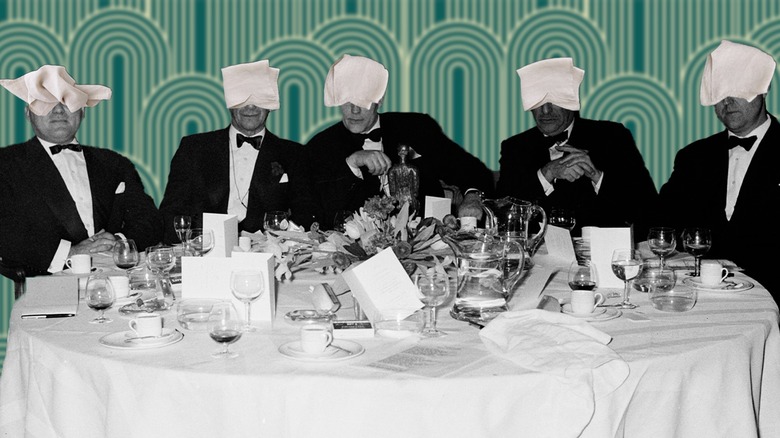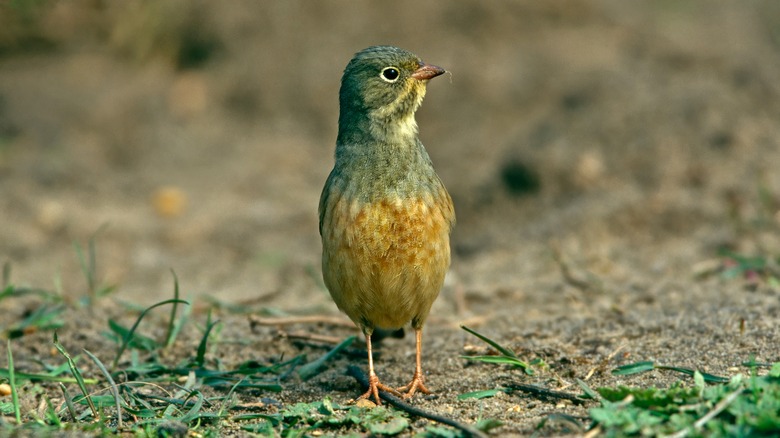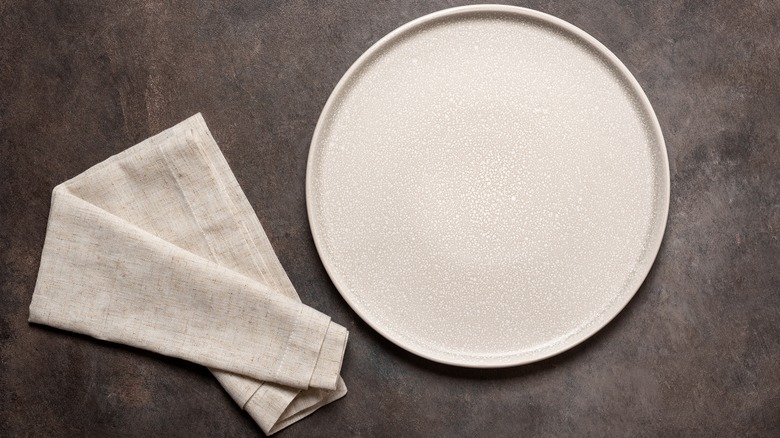The Illicit French Delicacy That Has Diners Hiding Under Their Napkins
Humans have a long history of eating controversial foods, from hallucinogenic honey to maggot-infested cheese. We've even been known to consume an exotic animal or two — a habit that in some cases, has led to the extinction of entire species (the dodo, Steller's sea cow, and the passenger pigeon are all famous examples).
But if you thought our appetite for eating wildlife to death was a thing of the past, think again — in France, researchers from the Centre for Ecology and Conservation Sciences believe a species of small songbird is also in danger of disappearing, thanks to its widespread (and in fact, illegal) use as a delicacy. The bird in question is the ortolan bunting (ortolan for short), a finch-like species found throughout much of Europe as well as parts of Asia, whose population has declined by 88% since 1980 through hunting and other factors, according to a 2016 study published in the ornithological journal Ornis Fennica.
These birds have been heavily hunted in France for decades (around 30,000 ortolan are killed each year), and are drowned in alcohol and eaten whole while the diner wears a napkin, towel, or other type of shroud on their head. Interestingly, this strange dish and its equally bizarre ritual continues to have the support of celebrity chefs, wealthy foodies, and even politicians (it's said that French president François Mitterrand famously ate two ortolan shortly before he died), despite the fact that hunting ortolans was outlawed in France in 1999.
The ins and outs of eating ortolan
Poachers trap the ortolan as they migrate through southwest France in the autumn, using nets or glue applied to the branches of trees. Once captured, the birds are kept in small cages away from the light and force-fed grains and ripe figs to fatten them up. When they've reached the desired plumpness (some birds will more than double in size), the ortolan are drowned in Armagnac — a type of French brandy, which also acts as a marinade. They are then plucked and boiled, before being presented to the table in one piping hot piece.
Tradition dictates that the diner must eat the entire bird, bar the beak, in a single mouthful (yes, that means bones and all). As for actual taste, leave it to the late, great Anthony Bourdain to best describe the flavor profile of this lurid delicacy: "It's sort of a hot rush of fat, guts, bones, blood and meat, and it's really delicious," he told Stephen Colbert in a 2011 interview,as reported in The New York Times.
The case for napkins
When it comes to the matter of the napkins and shrouds mentioned earlier, there's no definitive reason for why people choose to cover their heads while consuming ortolan. However, it's thought that perhaps it was originally seen as a way to shield what might be considered a sinful or blasphemous act from the eyes of an all-seeing God. In a more modern sense, it could be that diners are hiding the act from other people, because of the legal consequences that hunting these birds now carries — although, considering the napkin tradition is so specifically related to eating ortolans, it seems that donning a napkin would make it even more obvious what you're doing rather than less.
Another popular belief is that covering oneself protects fellow diners from the macabre manner in which the ortolan are consumed. After all, seeing someone put an entire bird in their mouth at the next table over hardly sounds appetizing. Another possible reason is that placing a shroud over the head helps to trap the delicacy's precious aroma, giving the diner an immersive experience that extends beyond mere taste. Whatever the reason, the future of this tradition is up in the air — it's possible that no-one will be indulging in ortolan, from beneath a napkin or otherwise, if these tiny birds are eaten to death.


